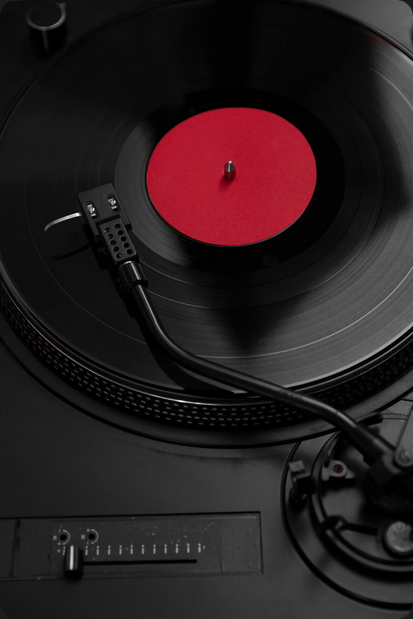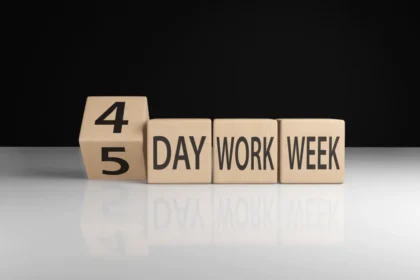Turn it up and pass the Discman — the 90s never left, they just needed a better algorithm. The sounds that raised a generation are resurfacing on Gen Z’s feeds, festival stages, and playlists with shocking freshness.
The 90s are back — and Gen Z made it viral 🎯
Why now? A perfect storm: short-form video, powerful recommendation engines, and a vibe that feels real in a hyper-filtered world. A dead-simple thesis has emerged — authenticity never expires. That’s why many younger listeners are gravitating to distortion, diary-level honesty, and hooks that don’t need Auto-Tune steroids to stick. If you want a sharp read on the grunge thread specifically, this walk-through of how Gen Z got hooked on Nirvana maps the leap from flannel to For You Pages with eerie precision.
“It’s the attitude for me — messy, honest, loud.” — a TikTok user
The sound that shaped a decade 🎸🎤💿
Even if you didn’t grow up taping radio hits, 90s music is shockingly easy to enter because it’s wildly plural. You’ve got the grit of Seattle, the golden-age storytelling of hip-hop, the bubblegum bravado of pop, the neon gloss of Eurodance, the singer-songwriter confessional, and a whole country renaissance. For genre context without the discourse flame wars, skim a full panorama of 90s genres and artists to see how many sub-scenes converged at once.
Why it resonates now:
- Imperfection feels human. Slightly off-kilter vocals, non-quantized drums, and live-room energy cut through compressed social audio.
- Narratives matter. Bars that talk policy and poverty, choruses about friendship and fallout — these are timeless entry points for a generation fluent in cause culture.
- Aesthetic is portable. Big pants, bigger hooks, and art direction that doesn’t require 3D renders help creators cosplay the decade with thrift-store budgets.
Algorithms as time machines — TikTok and the comeback cycle ⏱️
The algorithm doesn’t care when a song was released; it cares whether a seven-second chunk grabs you. That’s how deep cuts become “new” hits overnight. If you’ve wondered why a radio relic suddenly tops the viral chart after a dance trend or a meme, Billboard explains why older songs become new hits — sync moments, challenge formats, and creator collabs drag catalog tracks into fresh circulation.
Creators add their own polish: sped-up vocals, pitched-down choruses, key-change hooks cut for transitions. Sometimes all it takes is an iconic pre-chorus to soundtrack a GRWM, a thrift haul, or a campus montage, and boom — a whole cohort claims a track that predates their birth by a decade.
“My FYP turned me into a ‘90s playlist person overnight.” — an X user
Beyond grunge — the 90s country surprise 🤠
Headlines fixate on Nirvana and Biggie, but the data says something broader: 90s music across country is booming with younger listeners. There’s an ease and earnestness to the era that pairs perfectly with road-trip edits and summer-camp nostalgia videos. Streaming platforms have noticed — curated mixes and algorithmic stations are doing the curation heavy lifting. For numbers and nuance, see how Gen Z is streaming Nineties country in big numbers — a reminder that the revival is cross-genre, not monoculture.
Nostalgia meets new tech — AI, remixes, and revival tools 🤖🎶
Here’s the twist: the throwback isn’t just analog memory; it’s tech-assisted reinvention. AI voice models, stem splitters, and creator-friendly DAWs let fans flip a 1996 chorus into a 2025-grade duet, or re-imagine a verse in a totally different timbre. That’s fueling a cottage industry of hyper-real recreations, mashups, and “what if?” collabs that never happened the first time around. For the cultural angle, check our breakdown of hyper-real AI covers in the music scene — it shows how nostalgia and novelty can coexist without cannibalizing the originals.
Why this matters for artists and rights holders:
- Catalog gets fresh context. Old songs enter new emotional lanes: study sesh, gym edits, cozy winter, cottagecore fall.
- Discovery flows backward. A teenager hears a 15-second clip, taps through to the original, then spirals into a discography weekend.
- New revenue paths. Official remasters, deluxe reissues, sample-cleared remixes, and tour bundles keep legacy acts relevant while paying the bills.
Live is back — festivals as nostalgia engines 🎪
It’s one thing to loop a playlist; it’s another to scream a chorus with 40,000 people. Festivals caught on fast: tuck a 90s tribute set between hyper-pop and alt-R&B, and you’ll watch multiple generations lose it together. Capacities skyrocket, phones go up, and suddenly the livestream numbers look like a championship game. For a snapshot of how throwback energy can hijack the internet, browse Coachella’s viral moments and throwback energy — an easy proof that nostalgia, staged correctly, is rocket fuel.
Pro tip if you’re attending: build a “then/now” playlist for road-trip pregame — original 90s cut followed by a modern artist clearly influenced by it. You’ll hear the DNA weave itself in real time.
“Went for the headliner, lost my mind at the 90s tribute set.” — a Redditor
The 90s starter pack for Gen Z (and anyone catching up)
Grunge grit: Start with Nirvana’s big three single moments; jump to Pearl Jam for stadium-sized catharsis; sprinkle in Alice in Chains for harmony-driven heaviness.
Hip-hop truth: Pair Tupac’s reflective cuts with Biggie’s cinematic storytelling; add Lauryn Hill to understand the soul and scope of the decade.
Pop maximalism: Spice Girls for crowd-chant serotonin, Britney for immaculate hooks, Backstreet for boy-band choreography fuel.
Alt/adult-alt lane: Alanis for catharsis, Radiohead for adventurous textures, No Doubt for ska-pop kinetics.
Country curveball: Shania for genre-bending star power, Garth for arena energy, The Chicks for harmonies that slap even through phone speakers.
How to make the revival your own (without being a museum)
Don’t cosplay; curate. Mix 90s chord progressions with modern drum programming. Keep the mood, not the gimmicks.
Use stems wisely. When you split and flip classics, anchor your new arrangement on a melodic fragment rather than the whole chorus — it reads as homage, not hijack.
Borrow visual grammar. VHS grain, camcorder framing, and jewel-case graphics scream 90s, but apply them lightly so the content stays modern.
Credits are cool again. Tag inspirations. If you learned about a track via a creator’s clip, say so. That breadcrumb trail helps more people fall in love with 90s music the way you did.
Why 90s music lands emotionally in 2025
The internet taught us to compress feelings into captions. The 90s remind listeners that you can sit with the mess. Grunge normalized not knowing the answer. Hip-hop made local realities global. Pop gave permission to be “extra” before that was a compliment. And country showed that sincerity scales. In an era obsessed with personal branding, there’s catharsis in art that doesn’t apologize for being big, raw, or contradictory.
For artists: practical plays that work now
- Reissue with context. Pair remasters with mini-docs or creator challenges that explain the era’s look and gear.
- Invite the collab. Commission official remixes from credible modern producers; let fans vote on the B-side.
- Tour smart. Match set lists to the cities that streamed you the most; drop local-memory visuals to turn shows into reunions.
- License boldly. TV, streaming series, and indie games are the new radio. The right scene can turn a track into a summer phenomenon.
- Data isn’t destiny. If a deep cut is melting in the comments, promote that, not just the single.
The bottom line
The 90s aren’t back because we miss our youth; they’re back because the music still works. On cheap speakers. In seven-second loops. Through festival subwoofers. 90s music wasn’t made for algorithms — and that’s exactly why algorithms love it. Give a powerful chorus or a confessional verse a clean runway, and the emotion does the rest.
Social pulse (quick hits)
- “It’s the attitude for me — messy, honest, loud.” — a TikTok user
- “My FYP turned me into a ‘90s playlist person overnight.” — an X user
- “Went for the headliner, lost my mind at the 90s tribute set.” — a Redditor
FAQ
Why is 90s music having a revival now?
Short-form video rediscovered timeless hooks, and algorithms amplify them fast. As those clips spread, 90s music jumps from nostalgia to new discovery.
What 90s artists should I start with?
Begin with grunge pillars, golden-era hip-hop storytellers, and pop icons — then branch into country and alt. You’ll grasp how 90s music contained multitudes.
How does social media change the game for 90s music?
Platforms make micro-moments go macro. A single creator trend can push 90s music from dusty catalog to today’s charts.
Is AI helping or hurting the 90s revival?
Handled thoughtfully, AI extends the conversation. It can spotlight stems and textures while keeping 90s music at the center, not replacing it.
Where can I learn more about trends behind the revival?
Industry explainers and cultural deep dives help you connect dots so 90s music feels present, not just past.









